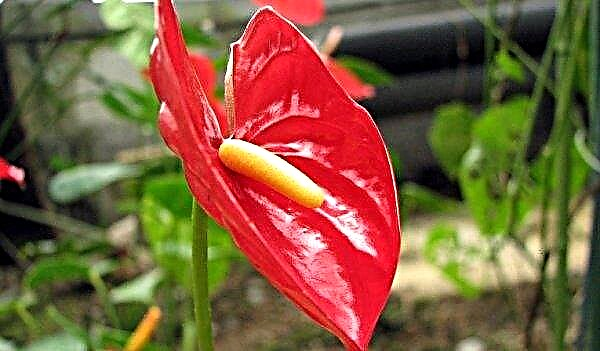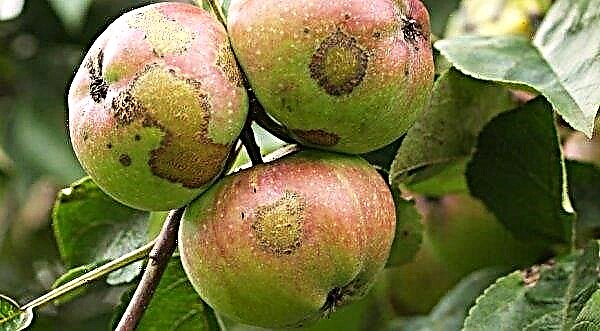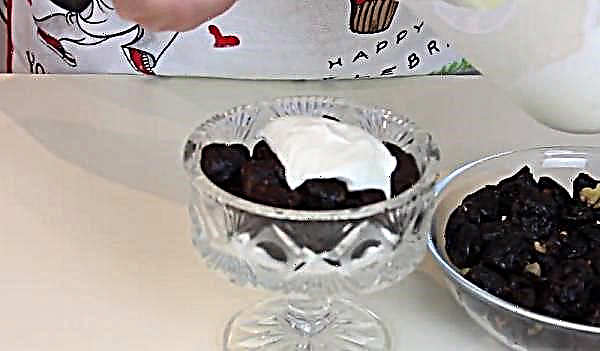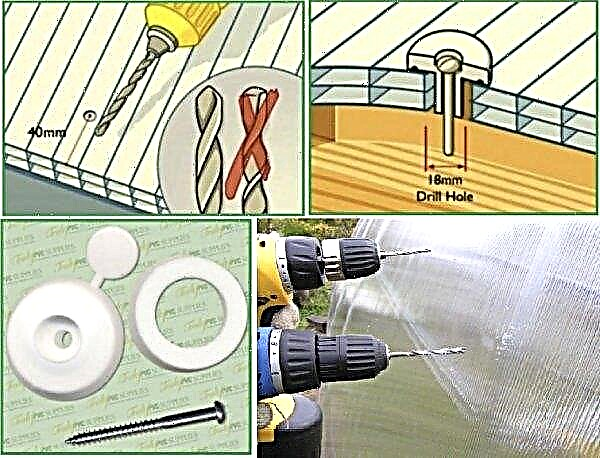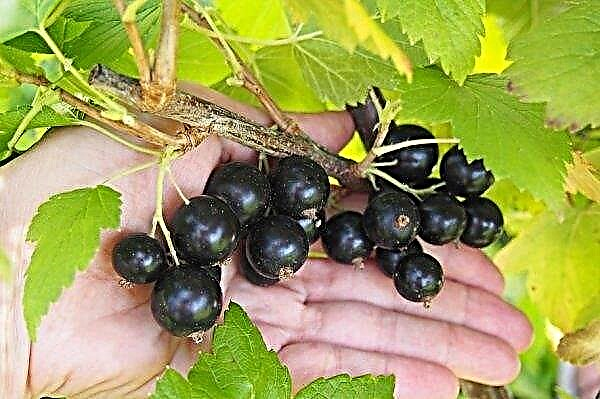When the orchid has faded, its lifestyle changes. At first, there comes a period of rest, which is replaced by a growth phase. Consider the new flower needs and changes in care.
Timing of flowering orchids
Orchids can bloom at different times of the year. Dates and durations vary between species and directly depend on the conditions of detention. Most varieties (cymbidium, dendrobium, cumbria) bloom in the summer for 2-3 months, while others, for example, phalaenopsis, can flower up to 8-9 months a year.
Did you know? Among the incredible number of orchids, there are varieties with black and green colors of flowers that smell like rotten meat and even bloom underground.
Features of the flowering period
When a plant is strewn with flowers, any environmental changes are painfully tolerated. The flowerpot should not be moved to another place, change the temperature and humidity. Even turning the other side to the light source can cause the buds to drop, and if water gets on the petals when watering or spraying, they will become stained. All activities are carried out only when the flowering is completed.
Flower care after flowering at home
Despite the widespread distribution of orchids around the world, in indoor floriculture they have long been considered moody and whimsical. Recently, many hybrids have been bred, the care of which does not cause much trouble. Let's consider how to care for an exotic plant at home after flowering so that it remains healthy, strong and more often pleased with flowers.
Did you know? Vanilla, widely used in cooking, is a valuable spice that is extracted from the fruits of flat-leaved vanilla creepers belonging to the Orchidaceae family.
Pruning
After flowering, dried up flower stalks are cut from the bush, leaving small stumps. In the phalaenopsis cultivar, sometimes children are formed on peduncles, often new shoots grow from the sinuses and flowering continues, therefore, one should not rush to prune. Pinching the tops also causes the peduncle to branch and increase the number of buds.
Video: pruning orchids after flowering
Fertilizer application
During the dormant period, the flower is not fertilized. Then, when growth begins and the top of a new leaf or bud of a peduncle appears, they begin to fertilize once every two weeks in a diluted form. Concentration is needed 3-4 times less than indicated on the manufacturer's label. Apply only special liquid solutions for orchids, balanced specifically for this type of plant.
There are two ways to fertilize:
- root dressing - nutrition is applied directly to the root ball after watering;
- foliar method - the solution is sprayed with leaves from the spray gun.

Watering mode
During dormancy, the orchid is rarely and moderately watered, waiting for the soil to completely dry. With the beginning of growth, watering is made more regular, avoiding an excess of water and its stagnation.
Important! Since the roots of the flower are very sensitive to an overabundance of salts in the soil, water for irrigation and spraying needs very soft, boiled or distilled.
The most suitable way is to immerse the pot in a container of water for several minutes, so that fractions of the soil and roots get wet well. After extraction, excess water should drain through the drainage holes. The leaves of the plant can absorb moisture in the same way as the roots, so it is recommended to spray them in the warm season with warm water. Liquid that has got into the axils of the leaves should be wet and removed from direct sunlight until the moisture evaporates.
In the warm season, watering is carried out 2-3 times a week, in winter and during dormancy, it is reduced to weekly.

Transfer
After flowering, the orchid is transplanted if it needs it. The need for transplantation is visually determined by the state of the roots — if they have encircled the entire inside of the pot, they are in large numbers outside, and the bush itself has risen above the surface of the soil — it's time to transplant.
The soil is taken special for orchids, different for epiphytic and terrestrial species.
Important! A common misconception is the choice of sphagnum moss as a substrate. After a while, its properties change and lead to rotting of the roots and fungal diseases.
The pot needs a plastic one, with a lot of drainage holes.
Transplantation is carried out in several stages:
- The pot with the plant is placed in a dish with water at room temperature to get wet.
- Carefully remove the root ball from the pot, which can be cut to facilitate the process. They clean the roots from fractions of the substrate, wash them and allow to dry for half an hour.
- The clean secateurs are cut off the dried and rotted parts of the roots, sprinkling the cut places with powdered coal. If necessary, the bush is divided into several parts for reproduction.
- The roots are placed in a new container and covered with a substrate to the root neck, tapping and shaking the pot for a dense and uniform filling of voids.
- The plant is firmly attached to the support so that it does not stagger. Poorly fixed orchids refuse to take root.
- The surface of the substrate and the roots are moistened from the spray gun and the flowerpot is placed in a place protected from the cold and direct sunlight.
Video: orchid transplant after flowering
What problems can arise?
The most common problem with keeping an orchid is its refusal to bloom. Often, improper care generally leads to the death of the plant and the host does not even have time to wait for the next bud to open.
The reasons for the development of such a situation may be the following:
- excessive watering and insufficient aeration of the roots - watering is reduced, the plant is transplanted into a suitable substrate for this type;
- lack of lighting - the flower is transferred closer to the window, protecting from direct rays or provide additional lighting;
- inappropriate temperature - it is necessary to provide a difference between night and day air temperatures of up to 5 degrees;
- incorrect fertilizer composition - for the development of green mass you need a high nitrogen content, and for flowering - phosphorus, magnesium and potassium;
- pest attack and disease - the plant is treated with appropriate drugs.

Long flowering, endless variety of species and longevity are indisputable advantages of this plant species. With proper care, an exotic flower will certainly thank you with an abundance of fantastic flowers of bewitching colors.


